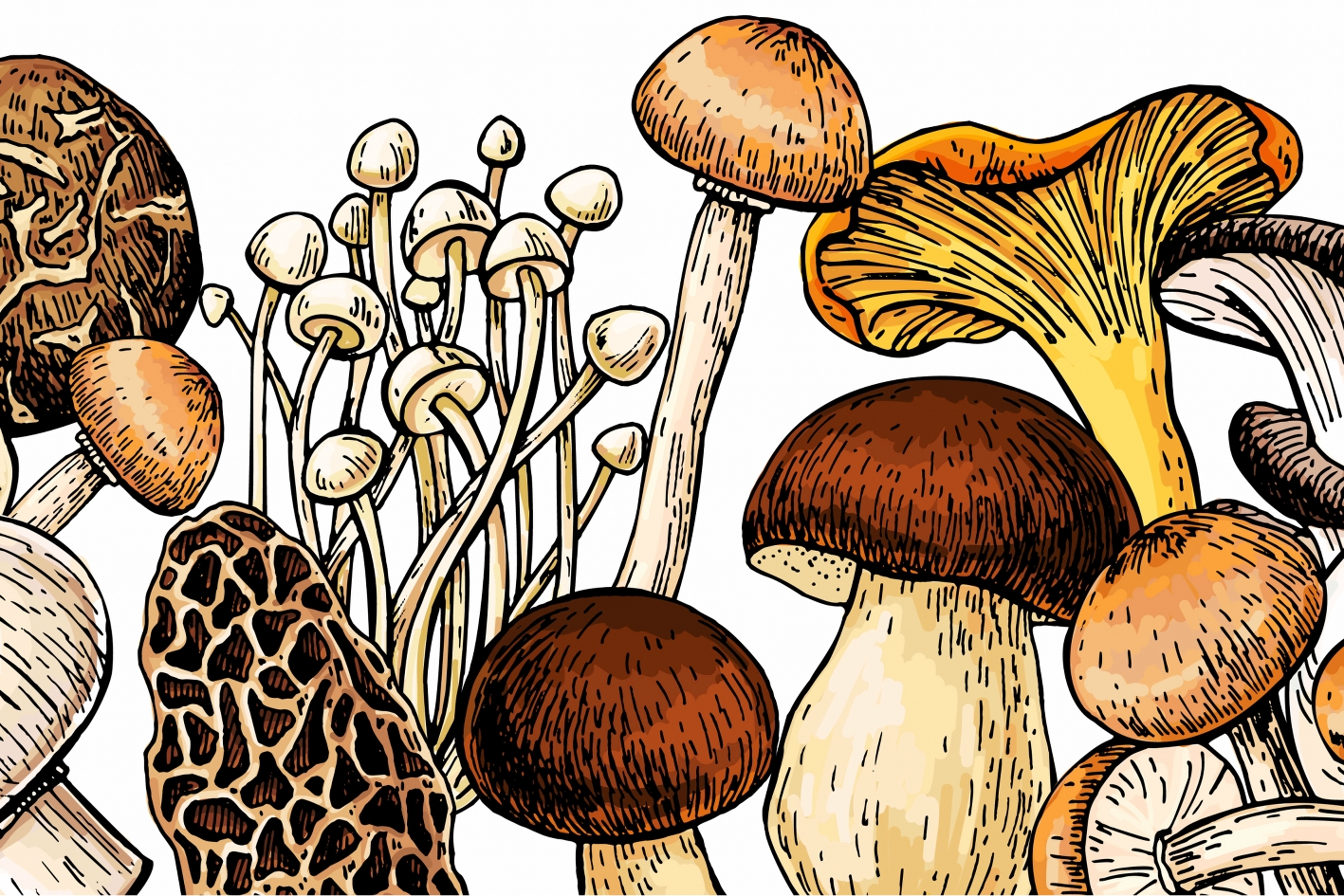
Seven are the most notable ones
" It isn't known exactly how many species of mushrooms there are in the world "
Used in medicine for centuries, loaded with vitamin D and a popular alternative protein to meat and fish, we take a look at some of the world’s most fabulous fungi.
It isn’t known exactly how many species of mushrooms there are in the world, but it is widely agreed that the figure is in excess of 10,000. Our sensational seven of the mushroom world are Shiitake, Oyster, Lion’s Mane, Morels, Porcini, Matsutake and Chanterelle.
Shiitake (Lentinula edodes) and Oyster (Pleurotus ostreatus) are both saprotrophic mushrooms, growing on non-living hardwood, deciduous trees. Oak and beech are a favourite for both varieties. Indeed, shiitake has many alternative names that reflect this - sawtooth oak mushroom, black forest mushroom, golden oak mushroom and oakwood mushroom.
Shiitake is most associated with the cuisines of China and Japan and it thrives in the warm and moist climates of Southeast Asia, although today these mushrooms are grown around the world.
The oyster mushroom feeds on a small species of worm - nematode - that lives in the wood of the tree. Some of the more common species include the Indian oyster, tree oyster, golden oyster, pink oyster, and the abalone mushroom. The flavour of oyster mushrooms is quite unlike some of its contemporaries, in that it lacks earthiness and is instead mild and almost sweet. It is a delicacy in Japanese, Korean and Chinese cuisine, and also popular in contemporary Czech and Slovak cuisine.
Lion’s Mane (Hericium erinaceus) favours dead logs or dying wood, but it will also grow on living wood, so could be considered parasitic. Lion’s Mane belongs to the tooth fungus group, so-called for its tendency to grow a single clump of long, toothlike spines. Native to North America, Europe and Asia, the cooked taste and texture of Lion’s Mane is said to be comparable to crab or lobster.
Our remaining four-star mushrooms are mycorrhizal. They grow on the forest floor and enjoy a symbiotic relationship with the tree roots, although Morels (Morchella) can also be saprotrophic. True morels are a genus of edible sac fungi. They have a distinctive, honeycomb appearance due to the network of ridges with pits composing their caps. Difficult to cultivate commercially, harvesting wild morels has become a lucrative business. With their earthy, nutty flavour and meaty texture, morels are prized by gourmet cooks, particularly in French cuisine.
Known as cep, Steinpilz, or penny bun, porcini (Boletus edulis) can be found fresh or dried. They grow readily in the temperate woodlands - deciduous and coniferous – of the northern hemisphere and can be found across Europe, Asia and North America. Porcini are prized for their earthy, meaty flavour and used to add intensity to Italian pasta and rice dishes, soups, sauces, and savoury specialities like risotto.
Matsutake (Tricholoma nauseosum), a highly prized autumnal delicacy revered by fine diners in Japan, is the world’s most expensive mushroom. It owes its fame to its spicy-aromatic odour, but this feature also makes this mushroom unpopular in other cuisines. After all, the scientific name of matsutake means ‘smelly mushroom’, which in Europe is described further as the ‘sock odour’. Matsutake grow in East and Southeast Asia (Bhutan and Laos), parts of Europe, and along the Pacific coasts of North America.
Chanterelle (Cantharellus cibarius), also known as the forager’s favourite, cannot be farmed commercially and can be very expensive. Distinctive with their bright yellow/orange colouring, chanterelles are found between summer and late autumn and grow across Europe, Asia, Central and North America as well as Africa.
The chanterelle owes its gourmet status to its delicate flavour and succulent texture. The popularity of chanterelles in 18th century French cuisine led to them becoming a symbol of wealth. Foragers beware, though, chanterelles should not be confused with the ‘false chanterelle’ or the ‘jack-o’-lantern’, both of which are poisonous.
Amanda Roberts
Editor - Revue de la Chaîne
This article was first published in the Revue de la Chaîne 2022
Edinburgh: Scotland's timeless and captivating capital